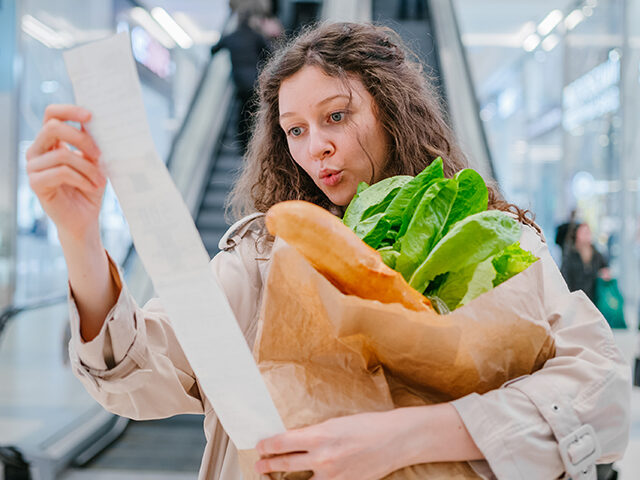Next week the Consumer Price Index (CPI) is likely to print its first negative month-to-month reading since May of 2020.
The Department of Labor said a month ago that CPI was “unchanged” in June, meaning the weighted index of prices paid by U.S. households had not risen from the May reading. This caused a good deal of confusion across the political spectrum. On the one hand, some conservatives understood this to mean that inflation had maintained the May pace when in fact it had fallen. On the other hand, some on the left said this meant that there was no inflation in the month. In fact, there was plenty of inflation—especially in food prices—but this was overwhelmed by the fall in gasoline prices.
Gas prices have now fallen for 13 consecutive weeks—88 consecutive days—and were falling throughout August. From August 1 through September 1, gasoline prices fell 10.6 percent, according to data from the U.S. Energy Information Administration. That’s a slightly slower pace than the July decline; but, with gasoline accounts for just about six percent of the CPI, that’s probably enough to guarantee a decline in the CPI.
Wall Street expects headline inflation to come down by 0.1 percent. Similar to last month, however, that headline decline will conceal a gain in underlying inflation. Core inflation, which excludes energy and food, is expected to rise 0.3 percent, matching the July figure. It’s very likely that food inflation will remain extremely elevated, bringing our measure of underlying inflation—core inflation plus food price, or foodcore—up even more. The Cleveland Fed’s measures of underlying inflation are likely to come in near last month’s reading of a 0.5 percent rise for median inflation and 0.4 for “16% trimmed mean” inflation.
There’s a pretty widespread misunderstanding of the relationship between gasoline or oil prices and food prices. The establishment media’s coverage of inflation often assumes that gasoline price hikes cause higher food prices by raising the price of running farm equipment and shipping farm products. More sophisticated analysis sometimes points out that because ethanol competes with petroleum as inputs for gasoline, rising crude oil prices could translate to higher corn prices. And since corn also goes into animal feed, this could push up the prices of grains, meats, and dairy.
While it’s true that food and oil and gas prices tend to move in the same direction, there’s very little evidence that this is really how things work. At its core, this gets the way prices work backward. Instead of the costs of bringing a product to market dictating the end price, the end price tends to control the costs. If the grocery store finds it cannot raise the price of steak without hurting sales, it refuses to pay the butcher more for his work, and the wholesale buyers refuse to pay more for the cow. To put it slightly differently, if the grocer could charge more for the steak, he would already be charging more for it; additional costs might eat into his margin but would not somehow create the ability or willingness of his customers to pay more.
So, although it may be somewhat counterintuitive, the prices of oil and food are likely to influence each other in the opposite way than the establishment media assumes. Increased food prices encourage farmers to increase production, which increases the demand for the inputs into farming, including fertilizers and fuel to run farm machinery. This pushes up the prices of oil and gasoline.
A review of research into the relationship between gasoline and food prices by economists at the Federal Reserve Bank of St. Louis found that the “findings suggest that if there is any link between increased food and oil prices, it is extremely small. Even after increased use of ethanol in oil, the evidence for pass-through is weak. ”
So, while the fall of gasoline prices may push down CPI mechanically, it will not necessarily do much to underlying inflationary pressures. Indeed, by freeing up some household income for spending away from the gas pump, it could add to inflationary pressures elsewhere. What’s more, lower gas prices are correlated with higher consumer confidence, which can fuel additional spending. A recent note by analysts at Bank of America found that the bank’s debt card and credit card spending data indicated that declines in spending on gasoline were leading to increases in discretionary consumer spending.
Bank of America recently concluded that more robust consumer spending—along with the related ongoing strength in the labor market—meant that the economy is unlikely to contract in the third and fourth quarter. The ongoing expansion, however, is likely to provide inflation with more room to run and push the Fed into additional interest rate hikes. Bank of America still expects the economy to contract for three more consecutive quarters, only now it counts the contraction as starting in the first quarter of next year instead of the third quarter of this year.

COMMENTS
Please let us know if you're having issues with commenting.